Two major branches of anti-cadmium defense in the mouse: MTF-1/metallothioneins and glutathione
- PMID: 16221973
- PMCID: PMC1253828
- DOI: 10.1093/nar/gki881
Two major branches of anti-cadmium defense in the mouse: MTF-1/metallothioneins and glutathione
Abstract
Metal-responsive transcription factor 1 (MTF-1) regulates expression of its target genes in response to various stress conditions, notably heavy metal load, via binding to metal response elements (MREs) in the respective enhancer/promoter regions. Furthermore, it serves a vital function in embryonic liver development. However, targeted deletion of Mtf1 in the liver after birth is no longer lethal. For this study, Mtf1 conditional knockout mice and control littermates were both mock- or cadmium-treated and liver-specific transcription was analyzed. Besides the well-characterized metallothionein genes, several new MTF-1 target genes with MRE motifs in the promoter region emerged. MTF-1 is required for the basal expression of selenoprotein W, muscle 1 gene (Sepw1) that encodes a glutathione-binding and putative antioxidant protein, supporting a role of MTF-1 in the oxidative stress response. Furthermore, MTF-1 mediates the cadmium-induced expression of N-myc downstream regulated gene 1 (Ndrg1), which is induced by several stress conditions and is overexpressed in many cancers. MTF-1 is also involved in the cadmium response of cysteine- and glycine-rich protein 1 gene (Csrp1), which is implicated in cytoskeletal organization. In contrast, MTF-1 represses the basal expression of Slc39a10, a putative zinc transporter. In a pathway independent of MTF-1, cadmium also induced the transcription of genes involved in the synthesis and regeneration of glutathione, a cadmium-binding antioxidant. These data provide strong evidence for two major branches of cellular anti-cadmium defense, one via MTF-1 and its target genes, notably metallothioneins, the other via glutathione, with an apparent overlap in selenoprotein W.
Figures
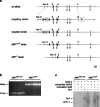
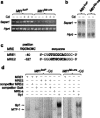
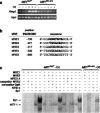
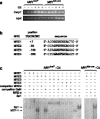
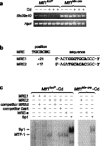

Similar articles
-
Metal-responsive transcription factor-1 (MTF-1) is essential for embryonic liver development and heavy metal detoxification in the adult liver.FASEB J. 2004 Jul;18(10):1071-9. doi: 10.1096/fj.03-1282com. FASEB J. 2004. PMID: 15226267
-
Embryonic lethality and liver degeneration in mice lacking the metal-responsive transcriptional activator MTF-1.EMBO J. 1998 May 15;17(10):2846-54. doi: 10.1093/emboj/17.10.2846. EMBO J. 1998. PMID: 9582278 Free PMC article.
-
Metal-responsive transcription factor-1 (MTF-1) selects different types of metal response elements at low vs. high zinc concentration.Biol Chem. 2004 Jul;385(7):623-32. doi: 10.1515/BC.2004.077. Biol Chem. 2004. PMID: 15318811
-
Putting its fingers on stressful situations: the heavy metal-regulatory transcription factor MTF-1.Bioessays. 2001 Nov;23(11):1010-7. doi: 10.1002/bies.1146. Bioessays. 2001. PMID: 11746217 Review.
-
Understanding the mechanisms of zinc-sensing by metal-response element binding transcription factor-1 (MTF-1).Arch Biochem Biophys. 2007 Jul 15;463(2):201-10. doi: 10.1016/j.abb.2007.03.019. Epub 2007 Apr 4. Arch Biochem Biophys. 2007. PMID: 17462582 Review.
Cited by
-
Metal-responsive transcription factor 1 (MTF-1) activity is regulated by a nonconventional nuclear localization signal and a metal-responsive transactivation domain.Mol Cell Biol. 2009 Dec;29(23):6283-93. doi: 10.1128/MCB.00847-09. Epub 2009 Sep 21. Mol Cell Biol. 2009. PMID: 19797083 Free PMC article.
-
Transcriptional regulation of mammalian selenoprotein expression.Biochim Biophys Acta. 2009 Nov;1790(11):1429-40. doi: 10.1016/j.bbagen.2009.05.012. Epub 2009 May 22. Biochim Biophys Acta. 2009. PMID: 19465084 Free PMC article. Review.
-
MTF-1-mediated repression of the zinc transporter Zip10 is alleviated by zinc restriction.PLoS One. 2011;6(6):e21526. doi: 10.1371/journal.pone.0021526. Epub 2011 Jun 27. PLoS One. 2011. PMID: 21738690 Free PMC article.
-
Zinc regulates a key transcriptional pathway for epileptogenesis via metal-regulatory transcription factor 1.Nat Commun. 2015 Oct 26;6:8688. doi: 10.1038/ncomms9688. Nat Commun. 2015. PMID: 26498180 Free PMC article.
-
The SLC39 family of zinc transporters.Mol Aspects Med. 2013 Apr-Jun;34(2-3):612-9. doi: 10.1016/j.mam.2012.05.011. Mol Aspects Med. 2013. PMID: 23506894 Free PMC article. Review.
References
-
- Vasak M., Hasler D.W. Metallothioneins: new functional and structural insights. Curr. Opin. Chem. Biol. 2000;4:177–183. - PubMed
-
- Haq F., Mahoney M., Koropatnick J. Signaling events for metallothionein induction. Mutat. Res. 2003;533:211–226. - PubMed
-
- Dalton T.P., Li Q., Bittel D., Liang L., Andrews G.K. Oxidative stress activates metal-responsive transcription factor-1 binding activity. Occupancy in vivo of metal response elements in the metallothionein-I gene promoter. J. Biol. Chem. 1996;271:26233–26241. - PubMed
Publication types
MeSH terms
Substances
LinkOut - more resources
Full Text Sources
Other Literature Sources
Molecular Biology Databases
Research Materials
Miscellaneous

